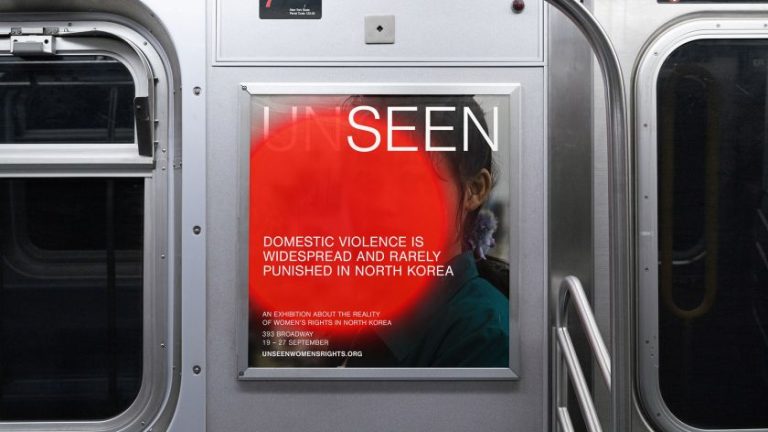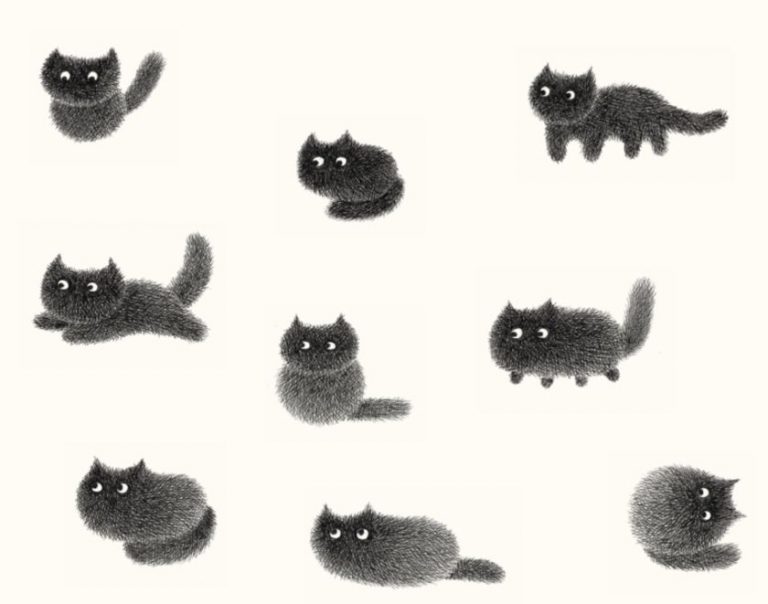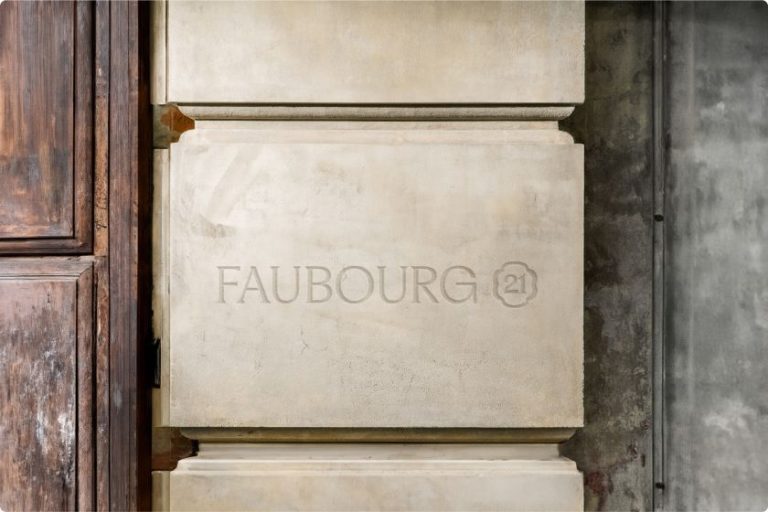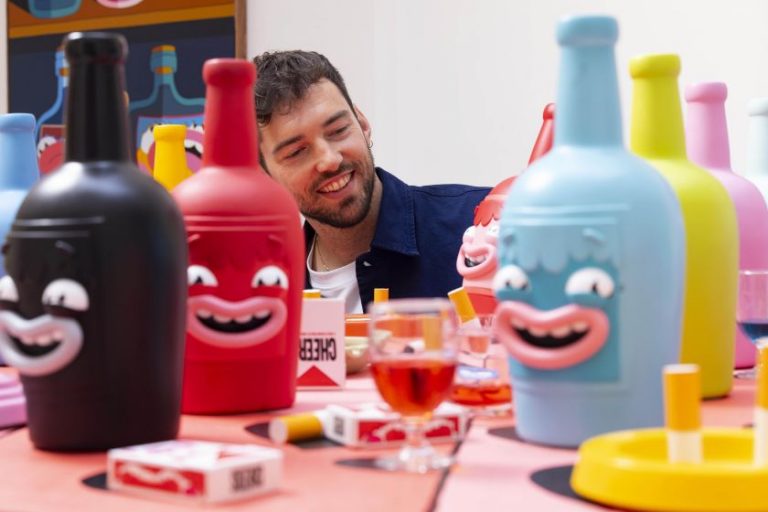Season of Victory, aka illustrator Linda Baritski, collaborated with LG Electronics Korea on the “Ground220” space in Seoul, South Korea
The leading illustration agency has spent decades creating a four-continent presence that’s made it one of the biggest players in the market. We chatted to them to learn the secrets of their success.
Forget the smoke and mirrors. While some illustration agencies slap the word “global” on a website and call it a day, IllustrationX has quietly built the real thing. A network of agents across four continents, each embedded in their local culture, yet seamlessly connected to the whole.
Founded in London in 1929, IllustrationX today has 15 agents spanning everywhere from New York to São Paulo, Hamburg to Shanghai. But as managing director Harry Lyon-Smith and North America director Stacey Endress tell me, it’s not just about having people in different time zones.
Becoming a top international agency means understanding that a client in Manhattan may need different things than one in Munich. And that brilliant artists exist everywhere…. not just in traditional creative capitals.
Organic growth beats grand plans
The modern story begins in 1992 when Harry travelled to Paris, hoping to drum up work. His French wasn’t up to scratch, though, and he found himself struggling through presentations with local art buyers.
“At the end of one, one of them said, ‘If you’d like to speak English, you can—but I’d suggest you get a rep in Paris if you want to get work,'” Harry recalls. “So that’s what we did.” That same day, Harry met Marie Bastille, who became their Paris rep; a relationship that continues today: “We’ve worked as a sister agency with her ever since.”
The success of this model led to Hamburg the following year, then a push into the US market in 1998. This expansion proved particularly challenging. “It took off pretty well after a couple of years, but then 9/11 happened—phones went quiet—and we thought it might be a disaster,” Harry recalls. “But it picked up again. And that’s where we’ve thrived especially.”
A clever structural solution
Today, IllustrationX is a leading local agency in both the USA and the UK, and the main agency in Brazil and South America. That’s partly down to their distinct structure. “Each agent covers clients, not artists specifically,” explains Stacey. “So US agents handle North American clients, but the artists can be based anywhere.”
This means a client in New York might commission an artist in Berlin, with the US team handling the commercial relationship, whilst the German office provides local support to the illustrator. “It wouldn’t make sense for me to manage clients in Australia—the time zones make it unworkable,” Stacey notes.
Cat was commissioned to create a centrepiece comic-style artwork for Manchester United’s new exhibition, Watch Us Rise, at Old Trafford’s museum
Most of the US team at IllustrationX, from left to right: Sarah Hodder, Stacey Endress, Briana Kranz, Harry Lyon-Smith and Lauren Ashleigh
Netflix once again tapped the talents of celebrated illustrator Butcher Billy to craft a suite of posters for the latest season of Black Mirror.
Key to making it work is constant communication across 15 agents: four in the US, two in the UK, three in Germany, two in Paris, one in Australia, two in Brazil, and one in China. “We have huddle calls every day, and a big team meeting every Wednesday, including marketing and account support,” Stacey explains.
The local knowledge advantage
That local know-how is powerful—and it goes far beyond just speaking the language. “It’s very helpful to have people on the ground who really understand local clients and cultures,” Stacey explains. “It improves the service both for clients and illustrators.”
For instance, when the US recently announced new tariffs on Brazil, their São Paulo-based agent Ana Bandarra provided crucial guidance that prevented costly mistakes. “This meant we didn’t make any decisions that would have upset artists; her local insight kept us on track,” Stacey notes.
Interestingly, the agency maintains websites localised for different regions—Japanese, Chinese, Korean, Spanish, Brazilian—with marketing materials customised for each territory. “So from an artist’s perspective, when someone joins, we market them in multiple languages and regions, both locally and internationally,” Harry explains.
A rare breed in the industry
Making geography work this seamlessly isn’t easy… which explains why truly international illustration agencies are actually surprisingly rare. Most that claim “global reach” operate from a single location or have limited international presence. Meanwhile, those that do exist tend to differ from IllustrationX in specific ways.
Some target specific niches, such as Bright which heavily focuses on children’s books. Others, such as Bernstein & Andriulli, have a broader remit than illustration, covering multiple disciplines including photography, hair and makeup artists and film directors.
Those that more closely match IllustrationX’s model, meanwhile, are typically smaller in scope. For example, Heart represents 31 illustrators across Europe and the USA, while The Artworks has offices in Kyoto, London and New York, but with a more limited artist roster.
In short, IllustrationX appears to cover a wider range of artists, clients and territories than most—maintaining both a wide breadth of styles and extensive geographic reach whilst focusing purely on illustration and animation.
Quality over quantity
Every illustration agency, of course, lives or dies on the quality of its talent, and that’s something IllustrationX takes incredibly seriously.
Every three months, the entire agent team reviews portfolios through their POMS (Portfolio Online Management System), holding conversations with artists about their careers. As Harry puts it: “We’re always trying to sharpen everyone’s pencil.”
Andy Gellenberg’s dynamic series of mural series unites sport, news and entertainment for NBCUniversal’s ‘Vive Le Live’ activation in France.
Dorset-based Brewery Badger worked with design agency Robot Food to re-vamp their beer labels, with art by illustrator Bob Venables.
Promotional material for the musical Gin Craze, illustrated by Caroline Church
He describes the artists on their books as “the top 1%” of illustration talent”, and is determined not to take them for granted. Indeed, on the few occasions the agency doesn’t end up delivering for them, they’ll be honest and open about it.
“There are implicit promises in representation,” he reasons. “If we can’t deliver on those, sometimes it’s best for the artist to find a better fit elsewhere, and we part ways amicably,” he admits. “It’s very sad when that happens, but our artists depend on us to maintain the highest standards, as we do of them.”
The authenticity advantage
This talented international roster is, happily, becoming increasingly valuable in the current moment. “Being able to summon artists from across the world is a huge draw for clients in this age of AI, where things can feel sterile,” Stacey explains. “The authenticity and background of each artist really matters, and that’s what brands are looking for right now.”
Harry adds: “I think part of the excitement and value of being international is that we can expose clients, in a very safe environment, to new talent. They get the security they need, but also access to ‘exotica’; talent and ideas they might not have tried before.”
This balance between adventure and safety is proving a crucial ingredient as brands seek differentiation. For example, one magazine client was particularly impressed to know that for events like Chinese New Year, they could immediately access appropriate Chinese artists through IllustrationX’s local network.
The mediation advantage
Of course, it’s not just about finding the right person for the job; it’s also about managing that relationship. “My job isn’t just to support the artist, but also the client, so there’s often mediation involved,” Stacey explains. “When we look for new agents, I say you’ll have to be a mediator and therapist all in one!”
One of Weston Wei’s captivating illustrations for The New York Times Travel Section
Puffin Books’ One Hundred Reasons to Hope was Illustrated throughout by Adam Larkum
Débora Islas brought Rihanna’s world to life in vibrant visuals for Quarto’s fan tribute, Rihanna Is Life
This illustration by Carolina Rodriguez Fuenmayor introduces Ruby Jean Cottle’s debut YA novel of mystery, emotion and transformation
So if cultural differences may occasionally create friction between, say, a Chinese artist and a French client, local agents can bridge those gaps through their daily communication network. “That’s what’s so useful about our daily meetings,” stresses Stacey. “Our constant banter and knowledge-sharing helps to head off problems, and solve things for clients and artists quickly and effectively.”
A model for the future
As the creative industry becomes increasingly global, IllustrationX’s approach offers a blueprint for sustainable international expansion; not through acquisition or franchise, but through genuine partnerships that respect local markets whilst sharing global resources.
In a world where “global” often means “one size fits all,” there’s real value in building something genuinely international: a network that’s both everywhere and local, all at once.










